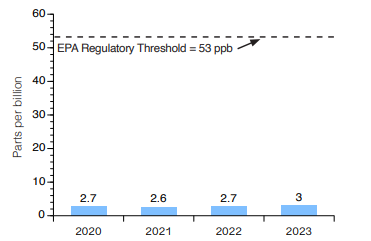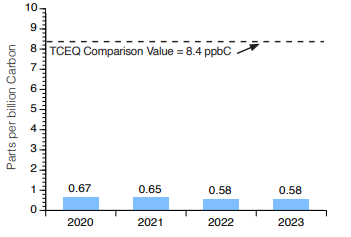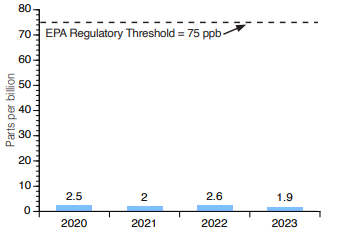selected item
2023
Gregory-Portland Air Quality Report Card
Air quality remains excellent in comparison to other Texas cities
Data collected over four years of continuous monitoring at three locations in Portland and Gregory show air quality remains excellent in comparison to other Texas cities.
Gregory-Portland air quality ranks in, or very close to, the top 10% in Texas compared to data measured at the 40 monitors operated or funded by TCEQ across the state.
Gregory-Portland Air Quality Report Card for 2023
| Grading Period: Jan to Dec 2023 | Grade |
| Overall air quality | A |
| Individual contaminants | |
| Benzene | A |
| Nitrogen Dioxide (NO2) | A |
| Sulfur Dioxide (SO2) | A |
| Fine Particulate Matter (PM 2.5) | B |
Grading scale for 2023
| Grade | Description |
| A | Excellent |
| B |
Good |
| C | Moderate |
| D | Unhealthy for select groups |
| F | Unhealthy for all |
Four year trends in Gregory-Portland air quality
Continuous, 24/7 air quality monitoring in the community
Objective: To measure the ambient (outdoor) air quality and keep the community informed of the air quality status as development continues to occur over time in the area.
- Three air monitoring stations (see locations on map)
- Located in residential areas to accurately measure the quality of the air residents breathe each day
- Began monitoring operations in January 2020
Air quality standards
There are two sets of metrics used by the Texas Commission on Environmental Quality (TCEQ) to assess the air quality in Texas. Both are shown in the charts below as reference points for the actual data reported.
1. EPA’s National Ambient Air Quality Standards (NAAQS)
2. TCEQ's Air Monitoring Comparison Values (AMCV)
Nitrogen Dioxide (NO2)

Fine Particulate Matter (PM 2.5)
NOTE: In February 2024, EPA lowered the NAAQS for PM 2.5 from 12 μg/m3 to 9 μg/m3.

Benzene

Sulfur Dioxide (SO2)

About the Gregory-Portland Air Monitoring Program
-
Independent, unbiased data collection and analysis by The University of Texas at Austin
Learn more about the multi-year data- Funded entirely by Cheniere Energy and Gulf Coast Growth Ventures for the benefit of the community
- Managed and operated (measurements made, data analyzed and results reported) independently by UT Austin to ensure unbiased data
- Data obtained using U.S. Environmental Protection Agency (EPA) federal reference or equivalent methods and instrumentation approved for air monitoring
-
Periodic, public reporting
Learn more about the multi-year data- All data are reported on a publicly available website (see links below) managed by UT Austin Center for Energy and Environmental Resources
- A summary of data is also presented annually in this report card for your convenience

